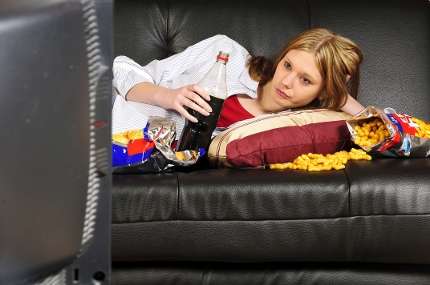Unhealthy' image influences adolescents' food choices

Adolescents more readily choose an unhealthy snack if they've been shown a picture of, for example, crisps or chocolate. This is the main finding of research conducted among Amsterdam schoolchildren by researchers from the University of Amsterdam and Leiden University. Their results once again reafirm the negative effects of adverts on the unhealthy behavioural choices of children. The results will soon be published in the journal Appetite.
The rate of obesity among Dutch children is expected to increase in the coming years. Although one in seven children under the age of 13 is currently considered to be obese, this is exactly the age group specifically targeted by adverts for unhealthy foods such as crisps and candy. The researchers therefore studied the possible underlying mechanism that forms the basis for the effects of adverts and the exposure to foods in the food choices of teenagers.
As part of the study, a group of Amsterdam teenagers between the age of 12 and 16 were asked to perform a computerised task for which they could earn a reward. During the task, the test subjects could choose between two buttons, one of which, for example, led to a picture of crisps and the other to a picture of a cucumber. While the teenagers were busy pressing the buttons, a cartoon image of monsters would appear every so often on the screen which, by means of Pavlovian conditioning, were associated with unhealthy snacks (crisps and chocolate) and healthy alternatives (cucumbers and tomatoes).
Especially susceptible to unhealthy stimuli
The results showed that unhealthy stimuli, in this case pictures, have a powerful influence on behavioural decision-making. When shown a monster that was indirectly associated with crisps, the teenagers were indeed more prone to choose crisps. The same effect was achieved when a picture of crisps was shown directly. The same happened with healthy stimuli, but the effect was generally less powerful.
'Our research once again reafirms the negative effect that unhealthy food advertisements have on the decision-making behaviour of children. The fight against obesity requires an environment that specifically focuses on healthy alternatives', says Sanne de Wit, one of the researchers.
More research needs to be done into the mechanism behind decision-making behaviour. The researchers believe that test subjects' responses are triggered automatically by external stimuli such as images.
More information: P. Watson et al. An associative account of how the obesogenic environment biases adolescents' food choices, Appetite (2015). DOI: 10.1016/j.appet.2015.10.008














